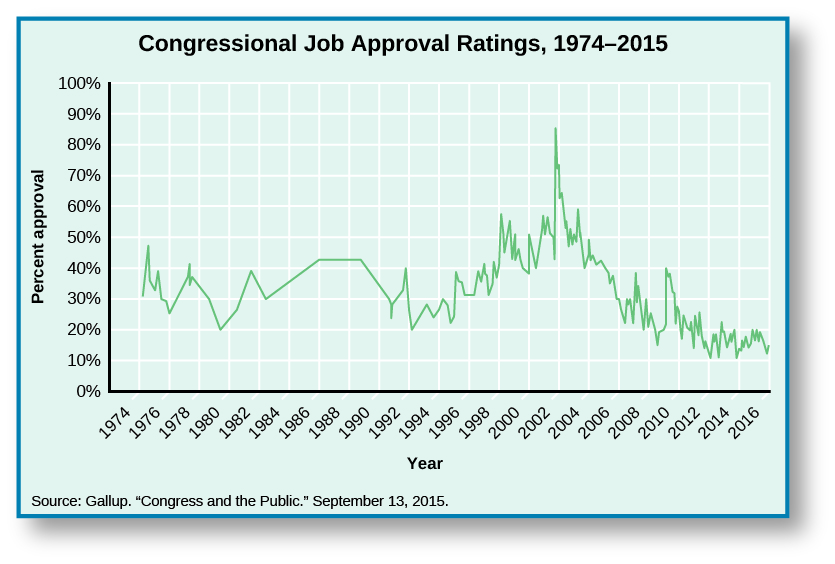| << Chapter < Page | Chapter >> Page > |
Gallup polling has tracked approval ratings for all presidents since Harry Truman. The Presidential Job Approval Center allows you to compare weekly approval ratings for all tracked presidents, as well as their average approval ratings.
Polling is one area of U.S. politics in which political practitioners and political science scholars interact. Each election cycle, political scientists help media outlets interpret polling, statistical data, and election forecasts. One particular watershed moment in this regard occurred when Professor James Stimson, of the University of North Carolina at Chapel Hill, developed his aggregated measure of public mood. This measure takes a variety of issue positions and combines them to form a general ideology about the government. According to Professor Stimson, the American electorate became more conservative in the 1970s and again in the 1990s, as demonstrated by Republican gains in Congress. With this public mood measure in mind, political scientists can explain why and when Americans allowed major policy shifts. For example, the Great Society’s expansion of welfare and social benefits occurred during the height of liberalism in the mid-1960s, while the welfare cuts and reforms of the 1990s occurred during the nation’s move toward conservatism. Tracking conservative and liberal shifts in the public’s ideology allows policy analysts to predict whether voters are likely to accept or reject major policies.
What other means of measuring the public mood do you think might be effective and reliable? How would you implement them? Do you agree that watershed moments in history signal public mood changes? If so, give some examples. If not, why not?
Congress as an institution has historically received lower approval ratings than presidents, a striking result because individual senators and representatives are generally viewed favorably by their constituents. While congressional representatives almost always win reelection and are liked by their constituents back home, the institution itself is often vilified as representing everything that is wrong with politics and partisanship.
As of August 2015, public approval of Congress sat at around 20 percent.


Notification Switch
Would you like to follow the 'American government' conversation and receive update notifications?